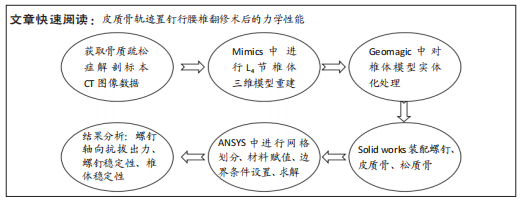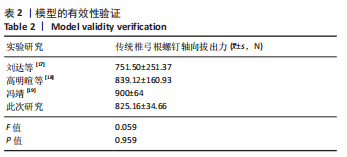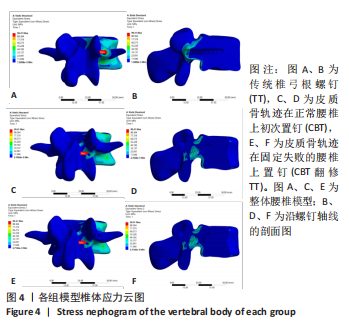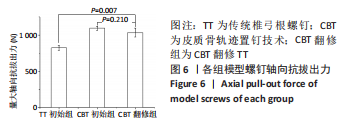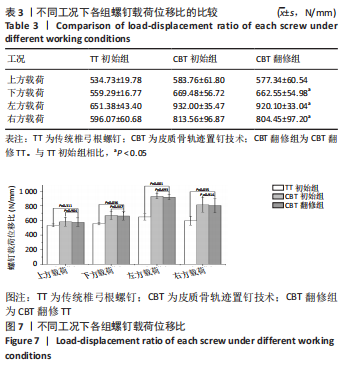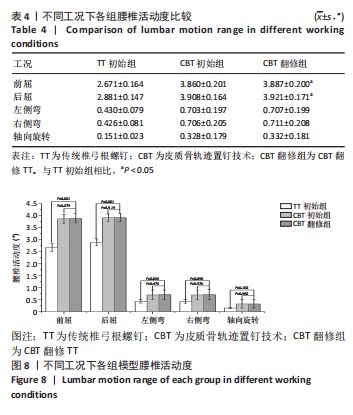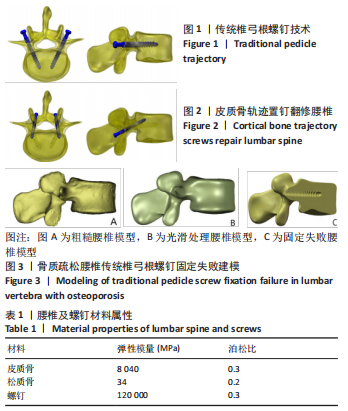[1] ROSINSKI A, ODEH K, UNGUREAN V JR, et al. Non-pedicular fixation techniques for the treatment of spinal deformity: a systematic review. JBJS Rev. 2020;8(5):e0150.
[2] TARAWNEH AM, SALEM KM. A systematic review and meta-analysis of randomized controlled trials comparing the accuracy and clinical outcome of pedicle screw placement using robot-assisted technology and conventional freehand technique. Global Spine J. 2021;11(4):575-586.
[3] DE KATER EP, SAKES A, EDSTRÖM E, et al. Beyond the pedicle screw-a patent review. Eur Spine J. 2022;31(6):1553-1565.
[4] 王轶希,居来提·买提肉孜,王水泉,等.有限元分析腰椎传统椎弓根钉道和改良皮质骨钉道的生物力学性能[J].医用生物力学, 2022,37(3):485-491.
[5] MAKHCHOUNE M, COLLARD X, TRIFFAUX M, et al. The utility of the CADISS® system in the dissection of epidural fibrosis in revision lumbar spine surgery (A case series). Ann Med Surg (Lond). 2022; 83:104718.
[6] PENG SB, YUAN XC, LU WZ, et al. Application of the cortical bone trajectory technique in posterior lumbar fixation. World J Clin Cases. 2023;16;11(2):255-267.
[7] GUO S, ZHU K, YAN MJ, et al. Cortical bone trajectory screws in the treatment of lumbar degenerative disc disease in patients with osteoporosis. World J Clin Cases. 2022;10(36):13179-13188.
[8] 郭亮兵,潘玉林,梅伟,等.皮质骨轨迹椎弓根钉在腰椎骨折翻修术中应用[J].中国矫形外科杂志,2022,30(6):570-573.
[9] SANTONI BG, HYNES RA, MCGILVRAY KC, et al. Cortical bone trajectory for lumbar pedicle screws. Spine J. 2009;9(5):366-373.
[10] SAKAURA H, MIWA T, YAMASHITA T, et al. Posterior lumbar interbody fusion with cortical bone trajectory screw fixation versus posterior lumbar interbody fusion using traditional pedicle screw fixation for degenerative lumbar spondylolisthesis: a comparative study. J Neurosurg Spine. 2016;25(5):591-595.
[11] HOFFMAN H, VERHAVE B, JALAL MS, et al. Comparison of cortical bone trajectory screw placement using the midline lumbar fusion technique to traditional pedicle screws: a case-control study. Int J Spine Surg. 2019;22;13(1):33-38.
[12] KOJIMA K, ASAMOTO S, KOBAYASHI Y, et al. Cortical bone trajectory and traditional trajectory--a radiological evaluation of screw-bone contact. Acta Neurochir (Wien). 2015;157(7):1173-1178.
[13] TAKENAKA S, MUKAI Y, TATEISHI K, et al.Clinical outcomes after posterior lumbar interbody fusion: comparison of cortical bone trajectory and conventional pedicle screw insertion. Clin Spine Surg. 2017;30(10):E1411-E1418.
[14] 任航宁,居来提·买提肉孜,帕尔哈提·热西提,等.皮质骨轨迹椎弓根系统拔出力下腰椎的有限元分析[J].中国组织工程研究, 2021,25(36):5771-5776.
[15] PASOTO SG, AUGUSTO KL, ALVARENGA JC, et al. Cortical bone density and thickness alterations by high-resolution peripheral quantitative computed tomography: association with vertebral fractures in primary sjögren’s syndrome. Rheumatology (Oxford). 2016;55(12):2200-2211.
[16] 陈学英,杨婷,马绍英,等.不同方法处理人类皮质骨材料的力学性能比较[J].辐射防护通讯,2012,32(3):22-25.
[17] 刘达,伍红桦,郑伟,等.骨质疏松尸体腰椎中膨胀式椎弓根螺钉与骨水泥强化椎弓根螺钉固定稳定性的比较研究[J].中国脊柱脊髓杂志,2014,24(7):638-643.
[18] 高明暄,周胜虎,邓晓文,等.骨质疏松对椎弓根螺钉稳定性影响的实验研究[J].中国骨质疏松杂志,2013,19(1):39-42.
[19] 冯靖.骨质疏松条件下四种椎弓根螺钉的稳定性比较及临床应用研究[D].西安:第四军医大学,2014.
[20] ODEH K, ROSINSKI A, MITTAL A, et al. Does the bone mineral density of the lumbar spine correlate with dual-energy X-ray absorptiometry T score? A adaveric-based analysis of computed tomography densitometry. Int J Spine Surg. 2023;17(1):132-138.
[21] 周志豪,阿拉法特·卡哈尔,王轶希,等.传统椎弓根螺钉与改良皮质骨轨迹置钉技术的生物力学性能有限元分析[J].中国组织工程研究,2022,26(18):2789-2794.
[22] MATSUKAWA K, YATO Y, IMABAYASHI H. Impact of screw diameter and length on pedicle screw fixation strength in osteoporotic vertebrae: a finite element analysis. Asian Spine J. 2021;15(5):566-574.
[23] REXITI P, AIERKEN G, WANG S, et al. Anatomical research on strength of screw track fixation in novel cortical bone trajectory for osteoporosis lumbar spine. Am J Transl Res. 2019;11(11):6850-6859.
[24] MAI HT, MITCHELL SM, HASHMI SZ, et al. Differences in bone mineral density of fixation points between lumbar cortical and traditional pedicle screws. Spine J. 2016;16(7):835-841.
[25] ZHANG S, LIU Z, LU C,et al. Oblique lateral interbody fusion combined with different internal fixations for the treatment of degenerative lumbar spine disease: a finite element analysis. BMC Musculoskelet Disord. 2022;4;23(1):206.
[26] ZHANG L, LI HM, ZHANG R, et al. Biomechanical changes of adjacent and fixed segments through cortical bone trajectory screw fixation versus traditional trajectory screw fixation in the lumbar spine: a finite element analysis. World Neurosurg. 2021;151:e447-e456.
[27] TOBING SDAL, WISNUBAROTO RP. Pull-out strength comparison among conventional pedicle screw,cortical infero-superior, and cortical supero-inferior trajectories in yorkshire porcine lumbar spines: a biomechanical study. Int J Spine Surg. 2020;14(4):580-584.
[28] LIU CW, WANG LL, XU YK, et al. Traditional and cortical trajectory screws of static and dynamic lumbar fixation- a finite element study. BMC Musculoskelet Disord. 2020;14;21(1):463.
[29] ZHANG RJ, SHEN CL. Research status and existing problems of lumbar pedicle double-trajectory screw technique. Zhonghua Yi Xue Za Zhi. 2023;103(9):635-639.
[30] LI J, CHEN YL, CHEN BH, et al. Effects of cortical bone trajectory screw in adjacent-segment disease after posterior lumbar interbody fusion. Zhonghua Yi Xue Za Zhi. 2021;101(45):3724-3729. |
